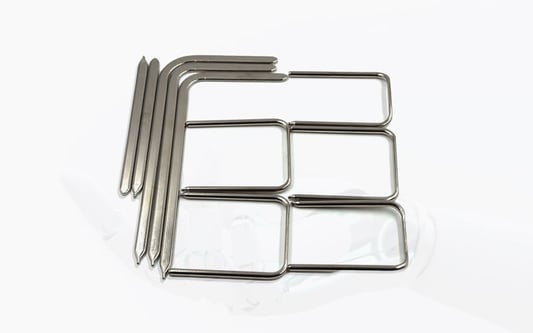Introduction
Heat pipes are versatile thermal management solutions widely used across industries to efficiently dissipate heat from electronic devices, machinery, and industrial equipment. Understanding the different series of heat pipes and their unique advantages can help businesses select the most suitable option for their specific applications. In this blog post, we'll delve into the classification, advantages, and applications of various heat pipe series to provide insights into their diverse functionalities.
-
Classification of Heat Pipe Series:
a. Standard Heat Pipes: Standard heat pipes are the most common type and consist of a sealed copper tube containing a working fluid. They transfer heat through evaporation and condensation of the fluid within the tube.
b. Vapor Chamber Heat Pipes: Vapor chamber heat pipes utilize a flat, sealed chamber with a wick structure inside. They offer superior thermal conductivity and are ideal for applications requiring high heat flux densities.
c. Loop Heat Pipes: Loop heat pipes feature a closed-loop system with a capillary wick structure, offering reliable heat transfer over long distances. They are suitable for spacecraft, satellites, and other aerospace applications.
d. Micro Heat Pipes: Micro heat pipes are miniaturized versions designed for compact electronic devices, offering efficient heat dissipation in limited space environments.
-
Advantages of Each Heat Pipe Series:
a. Standard Heat Pipes:
- Efficient heat transfer over long distances.
- Low cost and easy to manufacture.
- Suitable for a wide range of applications, including CPU cooling, LED lighting, and automotive electronics.
b. Vapor Chamber Heat Pipes:
- High thermal conductivity for rapid heat dissipation.
- Uniform temperature distribution across the surface.
- Ideal for high-power electronics, graphics cards, and LED displays.
c. Loop Heat Pipes:
- Reliable performance in extreme environments.
- Flexible design options for complex thermal management needs.
- Widely used in aerospace, military, and telecommunications industries.
d. Micro Heat Pipes:
- Miniaturized design for space-constrained applications.
- Enhanced heat transfer capabilities in small electronic devices.
- Commonly used in smartphones, tablets, and wearable devices.
-
Applications of Heat Pipe Series:
a. Standard Heat Pipes:
- CPU and GPU cooling in computers and gaming consoles.
- Thermal management in LED lighting fixtures.
- Battery cooling in electric vehicles.
b. Vapor Chamber Heat Pipes:
- Cooling solutions for high-performance CPUs and GPUs.
- Thermal management in advanced gaming PCs and servers.
- Heat dissipation in high-brightness LED displays.
c. Loop Heat Pipes:
- Thermal control systems for satellites and spacecraft.
- Cooling solutions for radar systems and avionics.
- Thermal management in laser diode systems.
d. Micro Heat Pipes:
- Cooling solutions for smartphones and tablets.
- Thermal management in compact consumer electronics.
- Heat dissipation in medical devices and wearables.
Conclusion
The diverse series of heat pipes offer unique advantages and are tailored to specific applications across various industries. By understanding the classification, advantages, and applications of each heat pipe series, businesses can make informed decisions when selecting thermal management solutions for their products and systems. Whether it's standard heat pipes for general-purpose cooling or vapor chamber heat pipes for high-performance electronics, there's a heat pipe series suitable for every thermal management need.

